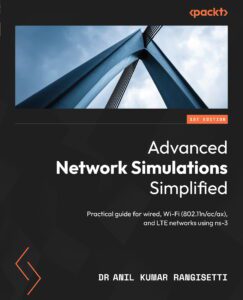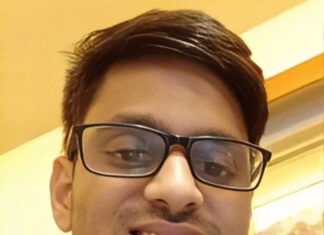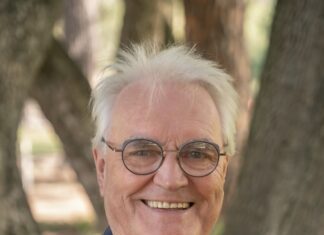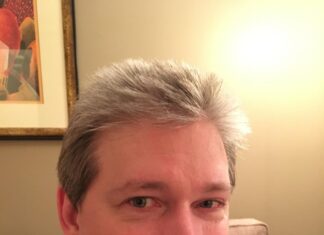Anil Kumar Rangisetti is the author of Advanced Network Simulations Simplified, we got the chance to sit down with him and find out more about his experience of writing with Packt.
Q: How did you become an author for Packt? Tell us about your journey. What was your motivation for writing this book?
Anil: I always believe in learning by doing principles. It drives me to search practical books for learning technologies. While I was searching for suitable books related to exploring cloud computing and virtualization technologies, I found a few interesting books from Packt. Then, I browsed many interesting titles from the Packt. I was really surprised with many interesting and practical guides for learning a wide range of technologies.
I really appreciate Packt publisher for encouraging practical guides for learning novel technologies in a wide range of domains. During this process, I believed that Packt was the right choice to realize my 5 years dream of writing a book on learning advanced network technologies. I reached one of the Packt team Members: Mr. Sarvesh Jaywant with my proposal. He helped me by sharing my proposal to the Packt team. The Packt team identified the potential and importance of my proposal and now it is born as a book.
Q: What is the name of your book?
Anil: Advanced Network Simulations Simplified.
Q: What kind of research did you do, and how long did you spend researching before beginning the book?
Anil: After spending nearly 6 years using many versions of ns-3 (ns 3.16 to 3.36) for research and teaching activities related to advanced networks, I identified a few important gaps and difficulties in using ns-3. Although ns-3 documentation and many Internet sources are available for learning ns-3, it is very difficult to understand and find the right sources in a quick time for learning and carrying out networking engineering and research activities. I had experienced this many times in finding suitable sources for changing modules and using ns-3 tracing, evaluations, and visualization activities.
Besides my research experience during PhD in working with advanced networking technologies, During my career I offered networking courses with the help of ns-3. Having close observations and inspections towards the students, researchers, and faculty issues in learning new networking technologies and feedback in using existing ns-3 sources, made me come up with this proposal. Since 2020, I have started preparing this proposal. After many revisions and suggestions, I approached Packt and it was finally approved. Now I am very excited to announce it is available for readers.
Q: Do you have a blog that readers can follow?
Anil: Currently, I am not maintaining any blogs. I will plan it in future.
Q: What key takeaways do you want readers to come away with from the book?
Anil: Easily learn and use ns-3 important features: analysis, debugging, and visualization. Learn common approaches to set up and evaluate any complex network and custom test scenarios through hands-on activities. Quickly learn essential concepts of 802.11n/ax/ax and LTE for experimenting and research activities.
Q: Can you share any blogs, websites and forums to help readers gain a holistic view of the tech they are learning?
Anil: 1. NS-3: https://www.nsnam.org/
2. Mobile Communications Paperback – by Jochen Schiller
3. https://www.extremenetworks.com/resources/ebook/wi-fi-6-6e-for-dummies/
4. An Introduction to LTE: LTE, LTE-Advanced, SAE and 4G Mobile Communications Author: Christopher Cox
Q. Did you face any challenges during the writing process? How did you overcome them?
Anil: Yes. Major objectives of this book are learning, experimenting, researching advanced network technologies simply and quickly. To achieve these objectives, I need to fill the knowledge gap in using ns-3 for learning Wi-Fi (802.11n/ac/ax) and LTE technologies. Hence, in this book basics and necessary concepts of the advanced technologies are discussed by relating with ns-3 supporting Wi-Fi (802.11n/ac/ax) and LTE modules implementations.
Besides, this book carefully explored which are ns-3 supporting and non supporting features. In this book, I carefully planned and covered how to set up interesting realistic Wi-Fi and LTE test scenarios. I believe this approach helps readers to use ns-3 for learning and exploring Internet, Wi-Fi and LTE features quickly.
Q. How would you describe your author journey with Packt? Would you recommend Packt to aspiring authors?
Anil: Fantastic! I really enjoyed working with Packt and I would like to continue it with many interesting proposals and activities. If someone is having interesting proposal on trending technologies, My first recommendation will be Packt.
Q. Why should readers choose this book over others already on the market? How would you differentiate your book from its competition?
Anil: I am happy to introduce this as the first practical guide for experimenting, learning, and researching heterogeneous LANs, wireless ad-hoc, High Efficiency Wi-Fi, and LTE networks. It helps readers to quickly learn essential concepts of advanced Wi-Fi technologies: 802.11n/ac/ax and LTE for setting up simulation topologies and do systematic performance analysis and research activities using ns-3.
There are many existing titles which focus on introducing and discussing necessary technical concepts of Internet, Wi-Fi, and LTE. Unique features of this book include practical approaches for learning the advanced networking technologies by learning ns-3 and all essential features, step by step procedures for setting up topologies and performance evaluations, and interesting hands-on and research activities related to Wi-Fi and LTE.
Q. What is/are your specialist tech area(s)?
Anil: Networking and Cloud Technologies.
Q. What advice would you give to readers jumping into this technology? Do you have any top tips?
Anil: Quickly go through basics and essential concepts. Learn thoroughly by practicing. Never hesitate to make mistakes but don’t repeat.
Q. Do you belong to any tech community groups?
Anil: 5G and LTE- 3GPP: https://www.linkedin.com/groups/136744/
SDN – Software Defined Networking: https://www.linkedin.com/groups/4856835/
Q. What’s your take on the technologies discussed in the book? Where do you see these technologies heading in the future?
Anil: This practical guide is helpful to readers in learning Ethernet, ad-hoc, Wi-Fi, WiFi 6, and LTE using ns-3 quickly. More importantly, it is necessary to learn basic wireless, Wi-Fi, and LTE concepts to work with trending IoT, Industrial IoT, Smart Cities, and 5G technologies. I believe this practical guide is helpful to all networking aspirants to work with advanced networking technologies and applications.
Q. How did you organize, plan, and prioritize your work and write the book?
Anil: Especially to write this book, I prepared suitable real time hands-on activities and tested them thoroughly in various scenarios. From my Wi-Fi and LTE research experience, I prepared tailor made examples for carrying out LTE, Wi-Fi, and Wi-Fi 6 research activities such as setting up realistic test setups, systematic evaluation procedures, using all important protocol features to enhance the performance of networks. By planning and prioritizing these activities, I am able to present all necessary technical concepts, implementation and hands-on activities of the book easily for meeting all deadlines.
Q. What are your favorite tech journals? How do you keep yourself up to date on tech?
Anil: Few of my favorite tech journals are IEEE, Elsevier, Springer and ACM Books: Packt, Apress, Addison-Wesley, McGraw hill, and BPB.
Q. Would you like to share your social handles? If so, mention them below.
Anil: Here you go: linkedin.com/in/anil-kumar-rangisetti-39923867
Q: What is that one writing tip that you found most crucial and would like to share with aspiring authors?
Anil: Conveying complex concepts is always challenging. I suggest follow top down approach while describing concepts or activities: First quickly introduce what do you want to cover then drill into each topics with details.
You can find Anil’s book on Amazon by following this link: Please click here









